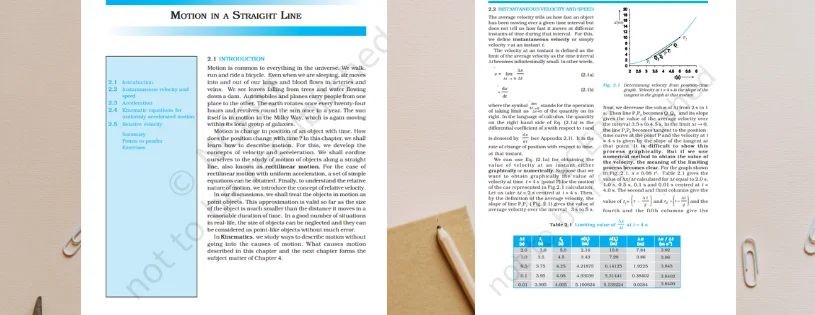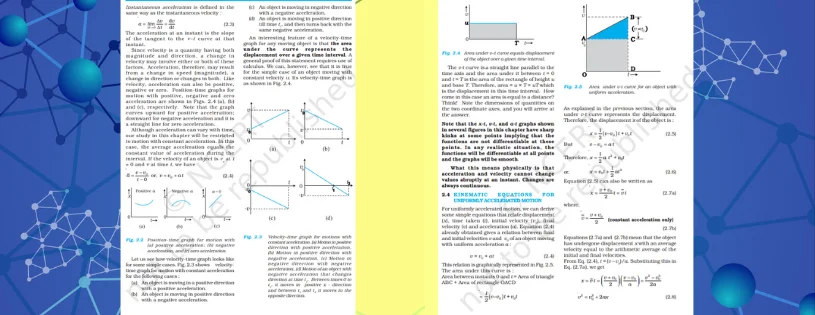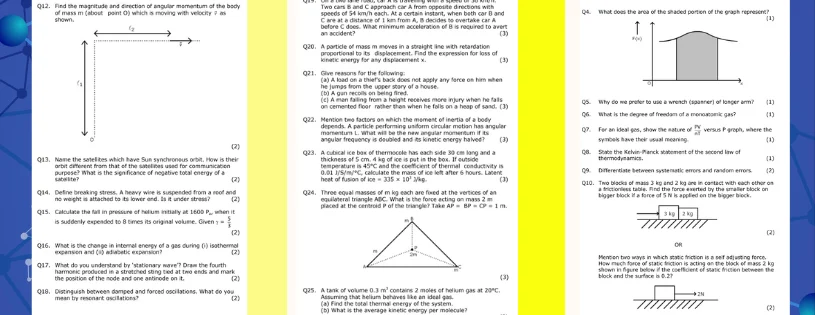Embark on a journey through the fundamental principles of physics as we delve into Chapter 2 – Motion in a Straight Line. This chapter is a cornerstone in understanding the basics of motion, paving the way for more intricate concepts in physics.
Class 11 CBSE Physics Chapter 2 Motion in a Straight Line NCERT Download
Motion in a straight line serves as the foundation upon which the intricate tapestry of physics unfolds.

In this introductory exploration, we embark on a journey to understand the fundamental principles governing the motion of objects along a straight path.
Exploring Physics Chapter 2 Motion in a Straight Line in CBSE NCERT Class 11
| CHAPTER NAME | MOTION IN A STRAIGHT LINE |
| Topic Number | Topics |
| 2.1 | Introduction |
| 2.2 | Instantaneous velocity and speed |
| 2.3 | Acceleration |
| 2.4 | Kinematic equations for uniformly accelerated motion |

CBSE Class 11 Board Exam Sample Paper: Test Your Knowledge in Physics Questions

[Previous Year Question Solution Physics Download Button]
[Previous Year Question Solution Chemistry Download Button]
[Previous Year Question Solution Mathematics Download Button]
| CBSE CLASS 11th |
| Class 11th CBSE Physics Chapters |
| Chapter1: UNITS AND MEASUREMENTS |
| Chapter3: MOTION IN A PLANE |
| Chapter4: LAWS OF MOTION |
| Chapter5: WORK, ENERGY AND POWER |
| Chapter6: SYSTEM OF PARTICLES AND ROTATIONAL MOTION |
| Chapter7: GRAVITATION |
| Chapter8: MECHANICAL PROPERTIES OF SOLIDS |
| Chapter9: MECHANICAL PROPERTIES OF FLUIDS |
| Chapter10: THERMAL PROPERTIES OF MATTER |
| Chapter12: KINETIC THEORY |
| Chapter13: OSCILLATIONS |
| Chapter14: WAVES |
| Class 11th CBSE Chemistry Chapters |
| Chapter1: SOME BASIC CONCEPTS OF CHEMISTRY |
| Chapter2: STRUCTURE OF ATOMS |
| Chapter3: CLASSIFICATION OF ELEMENTS AND PERIODICITY IN PROPERTIES |
| Chapter4: CHEMICAL BONDING AND MOLECULAR STRUCTURE |
| Chapter5: THERMODYNAMICS |
| Chapter6: EQUILIBRIUM |
| Chapter7: REDOX REACTIONS |
| Chapter8: ORGANIC CHEMISTRY – SOME BASIC PRINCIPLE AND TECHNIQUES |
| Chapter9: Hydrocarbons HYDROCARBONS |
| Class 11th CBSE Mathematics chapter |
| Chapter1: SETS |
| Chapter2: RELATIONS AND FUNCTIONS |
| Chapter3: TRIGONOMETRIC FUNCTIONS |
| Chapter4: COMPLEX NUMBER AND QUADRATIC EQUATIONS |
| Chapter5: LINEAR INEQUALITIES |
| Chapter6: PERMUTATIONS AND COMBINATIONS |
| Chapter7: BINOMIAL THEOREM |
| Chapter8: SEQUENCES AND SERIES |
| Chapter9: STRAIGHT LINES |
| Chapter10: CONIC SECTIONS |
| Chapter11: INTRODUCTION TO THREE-DIMENSIONAL GEOMETRY |
| Chapter12: LIMITS AND DERIVATIVES |
| Chapter13: STATISTICS |
| Chapter14: PROBABILITY |
| Class 8 Link soon |
| Class 9 Link soon |
| Class 10 Link soon |
| Class 12 Link soon |
CBSE Class 11th Downloadable Resources:
| 1. CBSE Class 11th Topic Wise Summary | View Page / Download |
| 2. CBSE Class 11th NCERT Books | View Page / Download |
| 3. CBSE Class 11th NCERT Solutions | View Page / Download |
| 4. CBSE Class 11th Exemplar | View Page / Download |
| 5. CBSE Class 11th Previous Year Papers | View Page / Download |
| 6. CBSE Class 11th Sample Papers | View Page / Download |
| 7. CBSE Class 11th Question Bank | View Page / Download |
| 8. CBSE Class 11th Topic Wise Revision Notes | View Page / Download |
| 9. CBSE Class 11th Last Minutes Preparation Resources | View Page / Download |
| 10. CBSE Class 11th Best Reference Books | View Page / Download |
| 11. CBSE Class 11th Formula Booklet | View Page / Download |
Being in CBSE class 11th and considering the board examinations you must be needing resources to excel in your examinations. At TestprepKart we take great pride in providing CBSE class 11th all study resources in downloadable form for you to keep you going.
Below is the list of all CBSE class 11th Downloads available on TestprepKart for both Indian and NRI students preparing for CBSE class 11th in UAE, Oman, Qatar, Kuwait & Bahrain.
FAQ
Q1. What is motion in a straight line?
Answer: Motion in a straight line refers to the movement of an object along a one-dimensional path without deviating from that path. The object can move forward, backward, or remain stationary.
Q2. How is displacement different from distance in motion in a straight line?
Answer: Displacement is the change in position of an object, considering both magnitude and direction. Distance, on the other hand, is the total path length covered and is a scalar quantity. Displacement is a vector quantity.
Q3. What is the significance of a reference point in motion?
Answer: A reference point is crucial for describing motion. It serves as a fixed location from which the position or displacement of an object is measured. The choice of reference point affects the values of displacement.
Q4. How do velocity-time graphs represent motion?
Answer: Velocity-time graphs illustrate an object's velocity changes over time. The slope represents acceleration, and the area under the curve represents displacement. A horizontal line indicates constant velocity.
Q5. Can an object have acceleration even if its speed is constant?
Answer: Yes, an object can have acceleration even if its speed is constant. If the direction of motion changes, the object experiences centripetal acceleration, even if the speed remains the same.
Leave a Reply